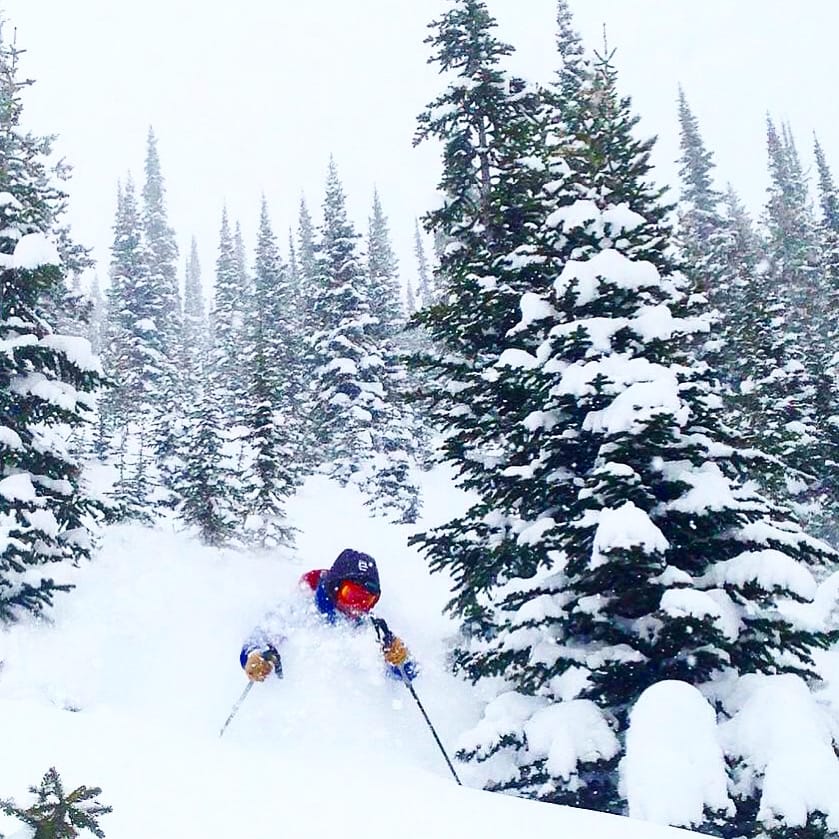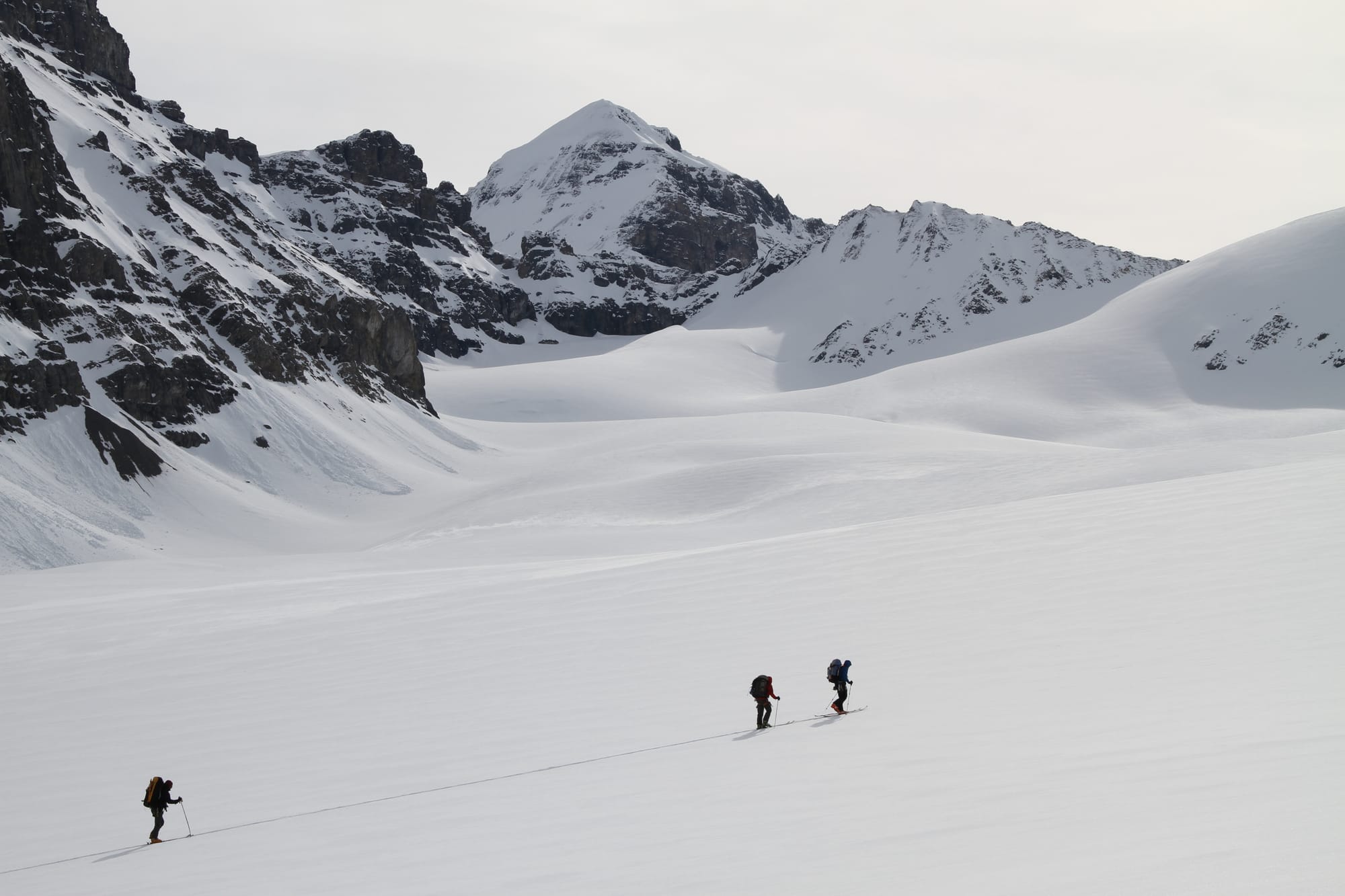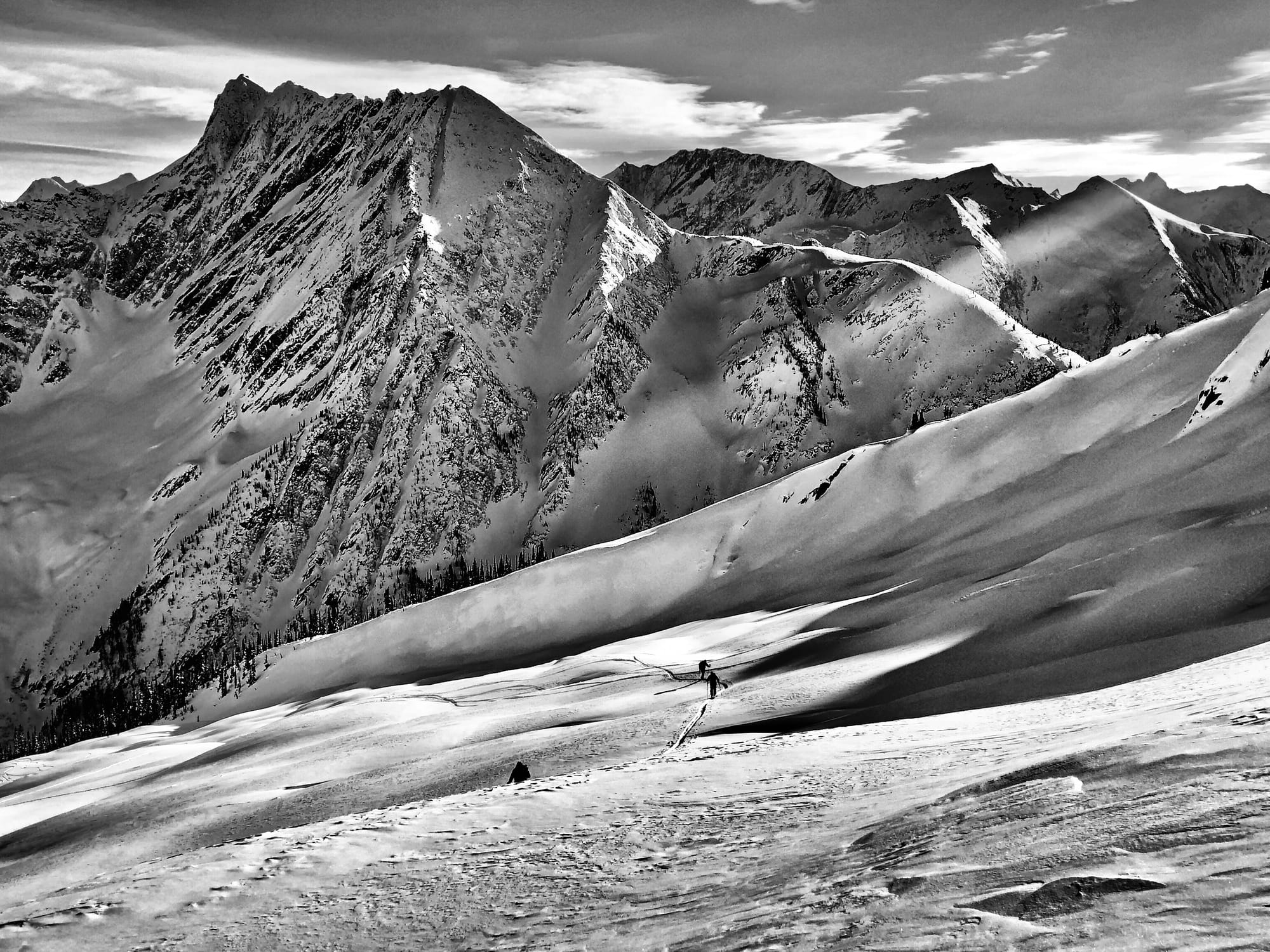Avalanche Forecasting 101
- Posted on
- By Conor Hurley
- Posted in Avalanche Forecasting, Backcountry, Conor Hurley
- 0

Avalanche forecasting boils down to understanding how weather, the snowpack and terrain will interact. Then you add the human element to it. It’s really that simple.
Avalanche forecasting is a fundamental part of backcountry skiing and splitboarding. It is a skill every backcountry enthusiast should strive to develop. Avalanche forecasting boils down to understanding how weather, the snowpack and terrain will interact. Then you add the human element to it. It’s really that simple.
Of course in reality, the avalanche phenomenon is not that simple to forecast, due to spacial variability of the distribution of weak layers, the variability of the terrain on which the snowpack lies and how local weather differs from valley to valley in the mountains. This article aims to lay out the key components of avalanche forecasting and how to incorporate them into a daily operational plan.
The Human Element
Avalanche forecasting is further complicated by the human element at risk. We wouldn’t care about avalanches if we didn’t interact with them, but we do; thus our daily avalanche forecasts need to take the human element into account. That is why the avalanche danger scale talks about the likelihood of human triggered avalanches.
https://avalanche.ca/glossary/terms/avalanche-danger-scale

The Building Blocks of an Avalanche Forecast
Certainty and Confidence
The interface of natural avalanche activity and the human factor is where certainty and confidence comes into play. Clearly when there is a human element at risk, we need elevated levels of certainty and confidence in our avalanche forecast to choose to expose ourselves to avalanche terrain.
During periods of high avalanche hazard, we can also have high levels of certainty. For example, there could be an omega block ridge of high pressure that persists for a couple of weeks, where a wide spread surface condition such as surface hoar at tree line and below and facets in the alpine develop. Then a huge storm comes in and deposits over a meter of snow in a short period of time with lots of wind. In that case, forecasters will have high levels of certainty/ confidence that stability will be poor and the avalanche hazard will be high. In this case, it is possible to have a high level of certainty and confidence and still need to employ a conservative operational plan.
Certainty relates to the forecaster’s level of confidence in their understanding of the relationship between weather, the snowpack and terrain. For example, if you spent the entire winter skiing the same planar slope every day and you paid attention to the weather and snowpack, you would have a really good idea of what layers were present in the snowpack, how deep they were buried and how the weather was affecting them. Your level of certainty and confidence as to how they would behave would be quite high. However if that same slope had gullies, micro changes in aspect, variations in pitch, thin to thick snowpack areas and there was a deep persistent weak layer, your level of certainty would be greatly reduced.
Ultimately, the less confidence and certainty you have in your avalanche forecast, the greater margin of error you need to give yourself in your daily operational plan. A case where you probably hear forecasters talk most about low confidence/ certainty is a Deep Persistent Slab. Often times the probability of triggering a deep persistent slab is low, but the consequence of triggering it is high. Therefore caution and conservative decision making must be employed.
Here’s an article that elaborates on this subject:
https://avalanche.ca/blogs/dps-management-and-mindset
Mindset
So how do we take certainty and confidence and apply them into real world decision making? That is where the mindset part of the avalanche forecasting process comes into play. Professionals use the mindset component to help guide their daily operations.
It gives us a means of ground truthing our behaviour in avalanche terrain. For example, if I am guiding a group on a basecamp trip in a remote zone I haven’t been in all year, my operational mindset for the first day will be “Assessment”. I will try and gather as much data as I can about the snowpack as I travel through the terrain. With an “assessment mode” mindset, I will choose terrain that gives me more options and make conservative decisions. I will look to confirm or disprove theories I had about the snowpack before I arrived.
If I gather evidence that demonstrates "very good" snowpack stability and low avalanche hazard, my mindset would shift to “Stepping Out” over the ensuing days. If I observed the presence of instability and elevated avalanche hazard my mindset would shift to “Stepping Back”.
During our daily operations, we can quickly reflect on our morning avalanche forecast and reference whether our decisions and actions fall within the respective mindset and if not, we need to ask ourselves why and what evidence have we gathered to support that change in operational mindset.
The Avalanche Triangle
Weather
Weather is one one third of the avalanche phenomenon, it is what forms the various types of surface forms that create instability within the snowpack. It also brings wind, which shapes and redistributes the snowpack which in turn forms wind or storm slabs, cornices or scours slopes.
Snowpack and Layers of Concern
The second component of the avalanche phenomenon is the snowpack; shaped by time, temperature, wind, sky conditions, precipitation and vapor transport, it evolves over the course of the winter and goes through periods of stability and instability.
Identifying the principal layers of concern on a daily basis, their likelihood of being triggered and their sensitivity to natural and human triggers plus the magnitude of an avalanche produced by the respective layer is an integral component of building an avalanche forecast.
Terrain
Terrain is the final third of the avalanche phenomenon; without it, avalanches don’t happen.
Generally, slopes over 30 degrees are required for avalanches to occur. Furthermore, terrain is what complicates avalanche forecasting, as it creates spatial variability in the distribution of weak layers and on a macro-scale it affects weather, wind and precipitation values, through orographic lift, catabatic winds and slope aspect etc.

Developing an Avalanche Forecasting Process
A morning workflow is how we call it in the Canadian guiding industry. Basically it’s a framework for building an avalanche forecast and operational plan for the day.
- Weather is a good starting point. Check real time data loggers and weather plots that are relevant to your forecasting zone. Then move onto weather forecasting models. You want to come away from this step with a good picture of the overnight changes to the snowpack and what the weather will be like for your operational day. Here are some links for these resources:
https://arctosguides.com/backcountry-lodge-trips/telemetry-and-weather-data-loggers/
https://www.meteoblue.com/en/weather/forecast/multimodel/rogers-pass_canada_6127147
https://plan.navcanada.ca/gfa/
- Local Avalanche Bulletins / Mountain Information Network reading them is next on the list. This will give you an idea of what others have observed locally and what your local avalanche center is listing for avalanche problems, as well as their avalanche forecast. https://avalanche.ca/map
- List out your snowpack concerns / types of avalanches that could affect you. Listing them in order of priority is a good way to structure your list. After you identify your avalanche problems rate their likelihood of being triggered, their sensitivity to natural and human triggers and the magnitude of an avalanche produced by the respective layer. Make sure to identify where in the terrain you think they exist, aspect, elevation and terrain features.
The link below has a great tutorial for this: https://avalanche.state.co.us/forecasts/tutorial/avalanche-problems
The CAA Observation Guidelines and Recording Standards is a great reference
https://cdn.ymaws.com/www.avalancheassociation.ca/resource/resmgr/standards_docs/ogrs2024web.pdf
Sensitivity to triggers Reference sheet: http://infoexhelp.avalancheassociation.ca/wiki/Sensitivity_to_triggers_definition_table
Likelihood Scale: https://www.avalancheassociation.ca/blogpost/1815963/352224/The-Likelihood-Scale-in-Avalanche-Forecasting?tag=likelihood
- Hazard Rating
Assign a hazard rating based on the previous information. https://avalanche.ca/glossary/terms/avalanche-danger-scale
- Rate your Confidence/ Certainty
Is it Low, Moderate or High?
- Mindset:
Based on your avalanche forecast set a strategic mindset for the day. The link below outlines the types of mindsets and is a good read:
https://arc.lib.montana.edu/snow-science/objects/ISSW14_paper_O9.02.pdf
- Run List or Operational Plan:
Put together a plan for the day based on your avalanche forecast and strategic mindset. Your plan should reflect your forecast. Give yourself a number of options that are in-line with your forecast as well.

Conclusion
That is the basic framework of avalanche forecasting. Try it out and use your own avalanche forecast in conjunction with your local avalanche bulletin. After you go ski touring, take some time to reflect on your forecast and see what worked and what didn’t. The drive home can be a great time to debrief with your ski partners and make a plan for the following day.

Comments
Be the first to comment...